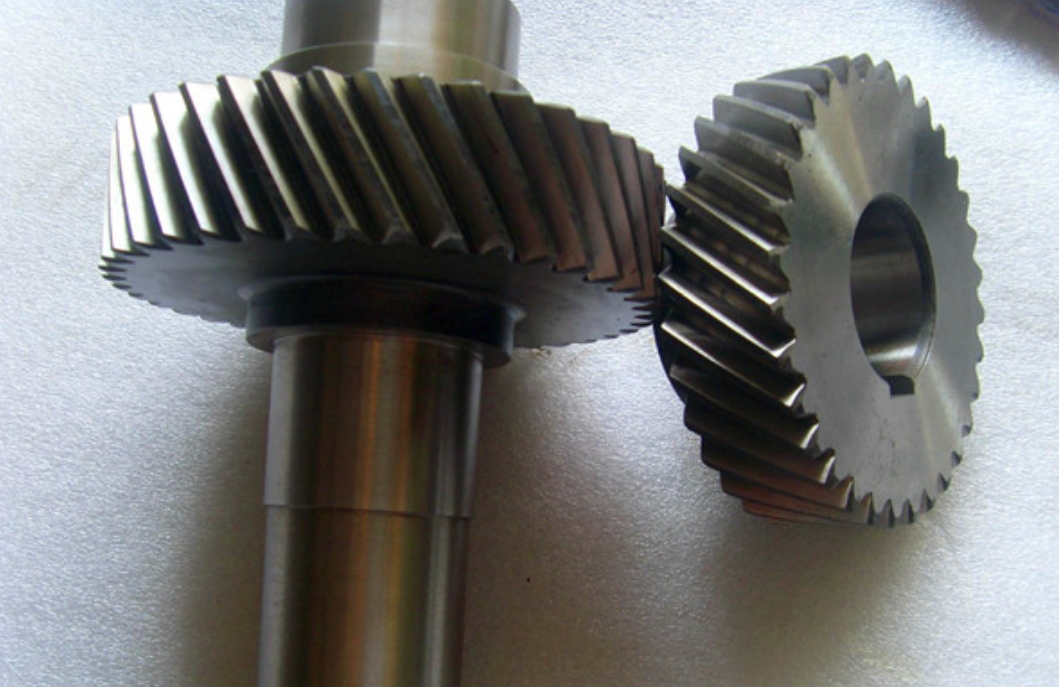Helical gears play a pivotal role in power transmission systems due to their superior load-bearing capacity and smooth meshing characteristics. To address premature failures caused by uneven bending strength and insufficient surface durability, this study proposes a multi-objective optimization framework using the Multi-Objective Particle Swarm Optimization (MOPSO) algorithm. The design variables include geometric parameters such as normal module, helix angle, and profile shift coefficients, while constraints ensure compliance with mechanical strength, meshing quality, and geometric feasibility.

1. Mathematical Model for Helical Gear Optimization
1.1 Objective Functions
Minimize Tooth Surface Contact Stress:
$$f_1 = \sigma_H = Z_H Z_E \sqrt{\frac{2000 T \cos^3 \beta}{m_n^2 z_1^2 b \varepsilon_\alpha} \cdot \frac{u+1}{u} \cdot K_1}$$
where \(Z_H\) = zone factor, \(Z_E\) = elasticity coefficient, \(T\) = torque, \(\beta\) = helix angle, \(m_n\) = normal module, \(z_1\) = pinion teeth, \(b\) = face width, \(\varepsilon_\alpha\) = transverse contact ratio, and \(K_1\) = load factor.
Minimize Bending Stress Difference:
$$f_2 = |\sigma_{F1} – \sigma_{F2}| = \left|\frac{2000 T K_1 Y_{F1} Y_{S1} Y_\beta \cos\beta}{m_n^2 z_1 b} – \frac{2000 T K_2 Y_{F2} Y_{S2} Y_\beta \cos\beta}{m_n^2 z_1 b}\right|$$
where \(Y_F\) = form factor, \(Y_S\) = stress correction factor, and \(Y_\beta\) = helix angle factor.
1.2 Design Variables and Constraints
Variables: \(X = [z_1, m_n, \beta, x_{n1}, x_{n2}]^T\)
Key constraints include:
- Contact fatigue strength: \(\sigma_H \leq [\sigma_{HP}]\)
- Bending fatigue strength: \(\sigma_F \leq [\sigma_{FP}]\)
- Total contact ratio: \(\varepsilon_\gamma \geq 2\)
- Tip thickness: \(s_a \geq 0.4m_n\)
| Parameter | Symbol | Value |
|---|---|---|
| Normal Module | \(m_n\) | 2–4 mm |
| Helix Angle | \(\beta\) | 8°–20° |
| Pinion Teeth | \(z_1\) | 17–30 |
2. MOPSO Algorithm Implementation
The MOPSO algorithm optimizes helical gear parameters through the following steps:
- Initialization: Generate particle swarm with randomized positions and velocities.
- Fitness Evaluation: Calculate \(f_1\) and \(f_2\) for each particle.
- Non-Dominated Sorting: Identify Pareto-optimal solutions using dominance criteria:
$$x_a \prec x_b \Leftrightarrow \forall i: f_i(x_a) \leq f_i(x_b) \wedge \exists j: f_j(x_a) < f_j(x_b)$$ - Archive Management: Maintain external repository for elite solutions based on crowding distance.
- Velocity Update:
$$v_{t+1} = w v_t + c_1 r_1 (p_{best} – x_t) + c_2 r_2 (g_{best} – x_t)$$ - Termination: Stop after 800 iterations or convergence.
| MOPSO Parameter | Value |
|---|---|
| Swarm Size | 200 |
| Inertia Weight (\(w\)) | 0.8 |
| Learning Factors (\(c_1, c_2\)) | 2.0 |
3. Case Study: Helical Gear Reducer Optimization
A single-stage helical gear reducer was optimized with initial parameters:
- Input power: 45 kW
- Speed: 1500 rpm
- Material: 20CrMnTi
| Parameter | Initial | Optimized |
|---|---|---|
| \(z_1\) | 18 | 21 |
| \(m_n\) (mm) | 4 | 3.5 |
| \(\beta\) | 17.27° | 20° |
| Contact Stress (MPa) | 720.9 | 687.2 |
| Bending Stress Difference (MPa) | 21.36 | 2.74 |
4. Simulation Verification
MASTA software analyzed stress distributions:
- Contact Stress Reduction: 33.7 MPa decrease (4.7% improvement)
- Bending Stress Balancing: Difference reduced from 26.2 MPa to 4.5 MPa
5. Conclusion
The MOPSO-based optimization framework effectively balances bending strength equality and surface durability in helical gear design. Practical applications show 22.3–29.2% improvements in dynamic response and stress uniformity. This methodology provides a systematic approach for enhancing the reliability and efficiency of power transmission systems using helical gears.
